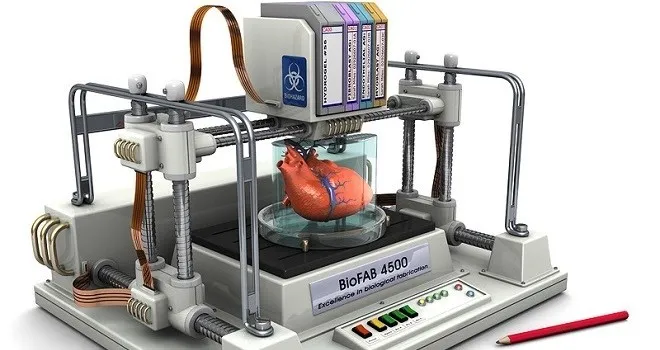Researchers at the University of Twente, in the Netherlands, has explored an innovative use for 3D printing techniques, by developing a three -dimensional structure, composed of a mixture of alginate/gelatin in the form of a redecilla, capable of getting a Insulin generating cell group are implanted in the pancreas without being rejected by the immune system of a group of patients with type 1 diabetes.
These cells, known under the name of Langerhans islets, are able to produce insulin and glucagon in the pancreas, crucial elements when serious hypoglycemic events are presented, and that are necessary in the body to help regulate the blood sugar levelsand avoid hypoglycemia.
Its successful implementation could mean an important step towards the cure of this disease.
According to the research report, published in IOP Publishing Biochabrication, after the integration of the islets to the 3D printed structure, through the bioplotting technique (using biological elements to print three -dimensional structures), both elements showed a complete and comprehensive functionality, functioning as a means of supply that did not generate rejected in the tissue of the test subjects.
"Our results show that once the islet cells of the scaffolding of alginate jelly in the laboratory were recovered were able to produce insulin and respond to glucose in the same way as not printed cells of the islets, which indicates thatThe procedure had not affected its viability or function at all, "highlights the study co -author.
So that its successful implementation could mean an important step towards the cure of this disease.With a possibility of a definitive treatment, which arose based on the principles of 3D printing.
Diabetes Tipo 1 desde 1.998 | FreeStyle Libre 3 | Ypsomed mylife YpsoPump + CamAPS FX | Sin complicaciones. Miembro del equipo de moderación del foro.
Autor de Vivir con Diabetes: El poder de la comunidad online, parte de los ingresos se destinan a financiar el foro de diabetes y mantener la comunidad online activa.
Sígueme en Instagram
Very promising, but as I read in other sources "the test subjects" in this investigation were the typical mice.
En 1922 descubrieron la insulina, en 1930 la insulina lenta. ¿Que c*** han hecho desde entonces?
fer
06/02/2015 12:27 p.m.
@Sherpa41 If you find the reference shared it, I had understood that it had been done with people.
Diabetes Tipo 1 desde 1.998 | FreeStyle Libre 3 | Ypsomed mylife YpsoPump + CamAPS FX | Sin complicaciones. Miembro del equipo de moderación del foro.
Autor de Vivir con Diabetes: El poder de la comunidad online, parte de los ingresos se destinan a financiar el foro de diabetes y mantener la comunidad online activa.
Sígueme en Instagram
I have been looking for her and I have not found her, I have confused myself and it was another investigation.
Although the other sources I have seen either clarify that they are people.:-?
In "Engadget" and many other websites where it puts exactly the same review there is something that I do not understand (what is in bold):
"Right Now, the project is just Grim-Looking Petri Dishes at the University of Twente, but if the process can be refined, The Type-1 diabeits May Never Again Have To Suffer TheEffects of an Attack of Hypoglycemia. "
En 1922 descubrieron la insulina, en 1930 la insulina lenta. ¿Que c*** han hecho desde entonces?
fer
06/02/2015 10:47 p.m.
Hello @sherpa41, the Grim-Looking expression is very colloquial and is used for when something is green or incipient, the part of "petri dishes" refers to laboratory pot, tubes, instruments, etc ... that is, that theProject is in the laboratories and in a very initial state, then they clarify that they need to refine it so that it really has a way out.
Diabetes Tipo 1 desde 1.998 | FreeStyle Libre 3 | Ypsomed mylife YpsoPump + CamAPS FX | Sin complicaciones. Miembro del equipo de moderación del foro.
Autor de Vivir con Diabetes: El poder de la comunidad online, parte de los ingresos se destinan a financiar el foro de diabetes y mantener la comunidad online activa.
Sígueme en Instagram
9 years have passed since this "news."It would already have to be studied, rehearsed and implemented, for "other things" they have taken place.
LADA desde septiembre de 2021
Toujeo y Fiasp
Aprendiendo




